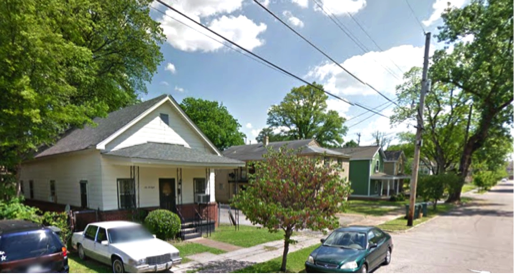Dulaney’s Districts
Putting neighborhoods on the National Register is an exhaustive, dedicated process. In this special series, the keeper of the Memphis Heritage Historic Properties Catalogue gives us snapshots of some wonderful but lesser-known historic neighborhoods.
Greenlaw Addition Historic District
By John Dulaney
This mostly residential historic district, located slightly northeast of the mostly commercial Pinch-North Main district, was added to the National Register in 1984. It was Memphis’s first subdivision, laid out in 1856 by brothers John and William Greenlaw.
They named streets for themselves and for their partners in the enterprise – Greenlaw, Looney, Saffarans, and Keel. Few of the original homes survive; most of the 336 contributing structures on 30 blocks date from the mid-19th century to the 1930s. From the mid-19th to the early 20th century, the district was economically, racially and ethnically mixed.

However, post-WWII so-called “white flight” led to the economic and political decline of Greenlaw Addition. To help counter this, the all-white public housing project of Hurt Village was constructed in the 1950s, similar to the Depression-era Lauderdale Courts. Decline continued over the years, but use of a federal Hope VI program in the late 1990s helped improve matters; one aspect was the rebuilding of Hurt Village into integrated mixed-income public and private housing. Other subsidized housing, infrastructure improvements, rehabilitation of privately owned homes, and private business development have helped uplift Greenlaw as well as the entire Uptown community.
“The quality of the architecture in the Greenlaw Addition Historic District is the best of its type in the city. There are excellent examples of Italianate, Queen Anne, Eastlake, and Colonial Revival frame cottages and shotguns. The district has the greatest concentration of such small, working-class houses remaining in Memphis. With the interspersing of larger residences, corner commercial buildings, and churches, the architectural importance of the neighborhood is broadened by illustrating the typical nineteenth-century and turn-of-the century urban pattern of mixing economic levels and commercial uses within a small area.”
Excerpt from the 1984 NR nomination


Read more about Memphis’ National Register properties and all of Dulaney’s Districts featured throughout this issue of StoryBoard Memphis.
This article and all of Dulaney’s Districts originally appeared in print Issue X, the August 2019 Neighborhood Issue, front page and pages 12, 23-25.
Sponsored by Captain & Co. Real Estate, LLC for their “Memphis Mondays” series. Look for Captain & Co.’s Memphis every Monday.


